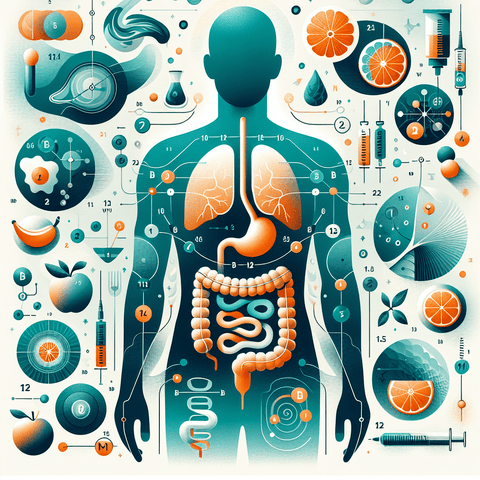Vitamin b12 metabolism describes the series of steps by which cobalamin is utilized in the body. The process begins with dietary or supplemental cobalamin entering the digestive tract, binding to intrinsic factor, and being absorbed in the ileum. After absorption, cobalamin travels in the blood bound to transcobalamin II, is delivered to cells, and is stored in the liver as part of the body's reserve. This overview of vitamin b12 metabolism highlights how the molecule moves from intake to intracellular use and how the body manages its available pools. Within cells, vitamin b12 metabolism splits into two main coenzyme forms: methylcobalamin and adenosylcobalamin. Methylcobalamin acts as a cofactor for methionine synthase, enabling remethylation of homocysteine to methionine in the cytosol and connecting to the folate cycle. Adenosylcobalamin serves as a cofactor for methylmalonyl-CoA mutase in the mitochondria, catalyzing the conversion of methylmalonyl-CoA to succinyl-CoA, a step in several catabolic pathways. These two branches illustrate how vitamin b12 metabolism coordinates different cellular compartments to support core metabolic reactions. Vitamin b12 metabolism is tightly regulated through storage, recycling, and transport. The liver stores substantial reserves of cobalamin, which can be released when needed; the enterohepatic circulation recycles cobalamin; and turnover depends on cellular demand and metabolic context. When metabolism is perturbed, markers such as methylmalonic acid and homocysteine in blood or urine may reflect aspects of vitamin b12 metabolism and related one-carbon metabolism status, aiding interpretation of metabolic function. Practical aspects of studying vitamin b12 metabolism include understanding the roles of carrier proteins and coenzyme forms, recognizing that distinct compartments (cytosol and mitochondria) use different coenzymes, and being familiar with common laboratory indicators used to assess metabolism. For those interested in monitoring this system, exploring the impact of factors that influence absorption and transport—such as intrinsic factor interactions and transport proteins—can help contextualize results. Consulting with a professional can provide interpretation of measurements related to vitamin b12 metabolism and track changes in relevant biomarkers over time.

